Art & Exhibitions
Lost Treasures From the Thames Will Go on View at the London Museum
The exhibition is the first to explore the centuries-old practice of mudlarking.
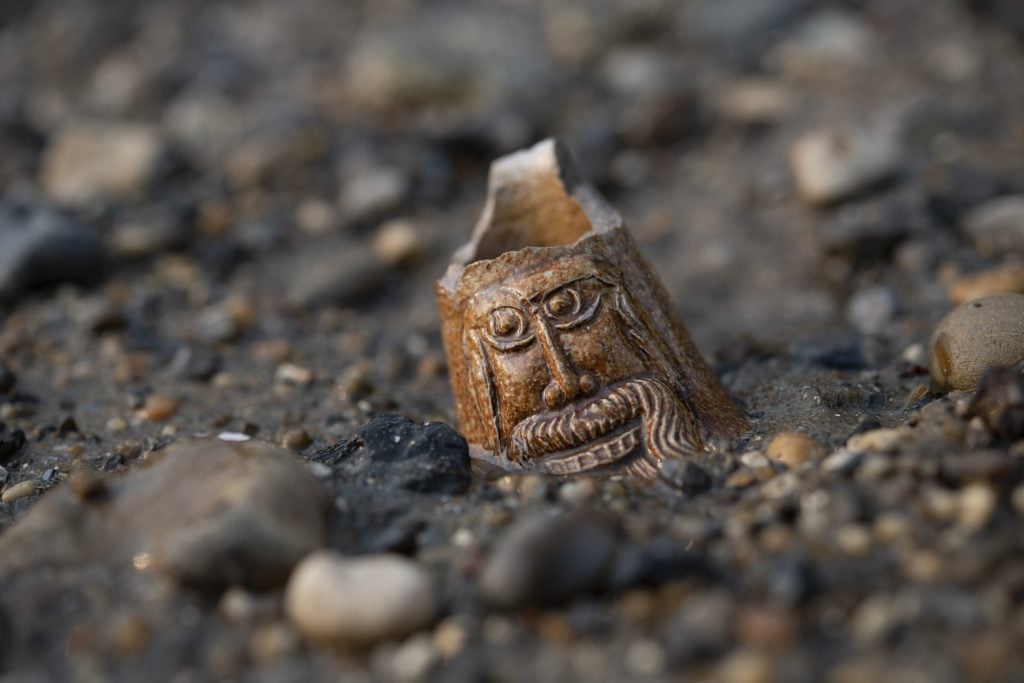
Twice a day, the River Thames flows out towards the North Sea exposing miles of briny clay banks. During these windows of low tide, one of Britain’s largest archaeological site emerges and Londoners have long scoured the foreshore in search of all the city has lost, forgotten, or discarded.
The practice is called mudlarking, a term drawn from 18th and 19th-century mudlarks who eked out a living scavenging for scraps of metal, rope, coal, or anything else sellable. It was predominately the occupation of impoverished children and was grueling, hazardous work. Tides can shift suddenly and London’s factories pumped industrial detritus straight into the river.
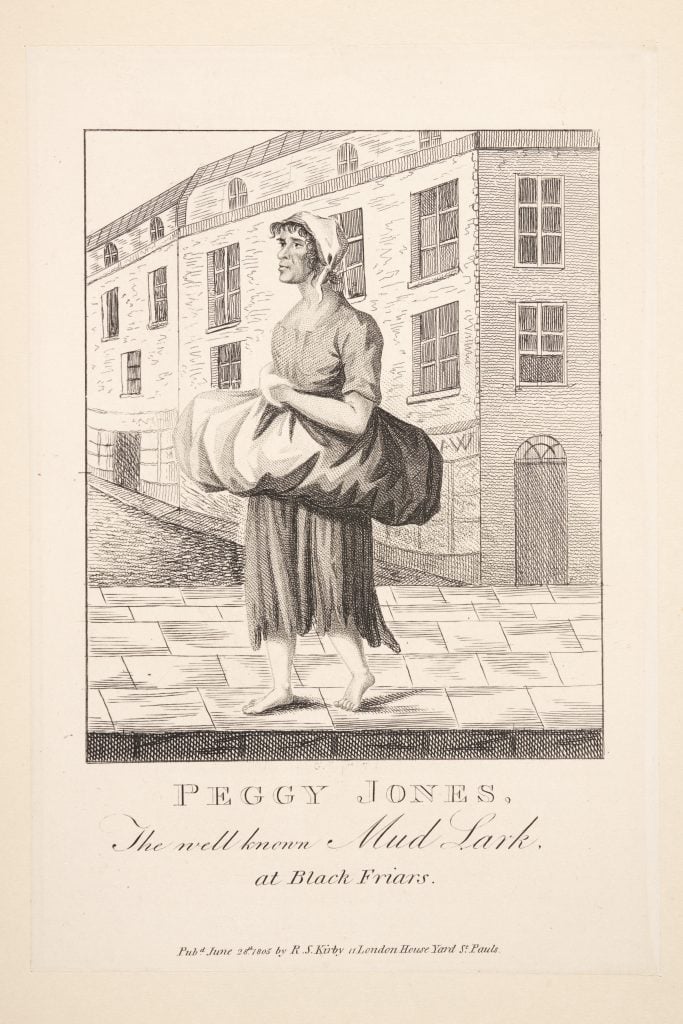
Print of Peggy Jones, a well-known mudlark, produced in 1805. Photo: © London Museum.
Today, the tradition of mudlarking is continued by committed hobbyists who search for artifacts from London’s past, sometimes with the aid of a metal detector. Prehistoric hunter gathers relied on the river, so too did the Romans, Vikings, and Normans as the Thames served as Britain’s main thoroughfare from the Middle Ages through to the Industrial Revolution. There is, in short, much to uncover; the oxygen-free nature of the Thames foreshore makes it an excellent preservative.
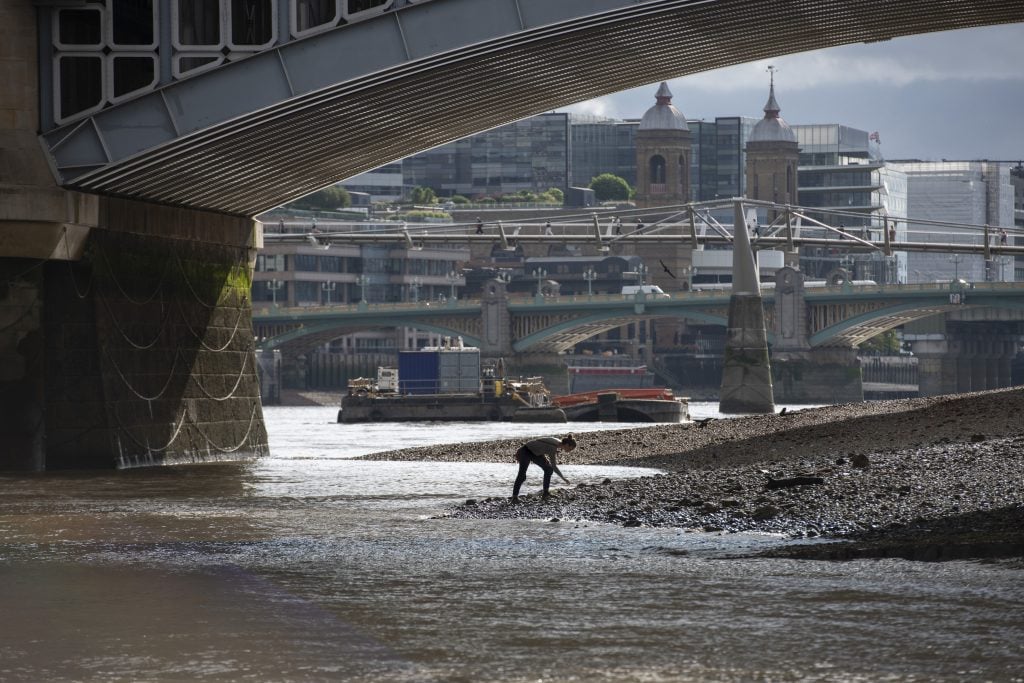
Mudlarking taking place between Millennium Bridge and Southwark Bridge. Photo: © London Museum.
Modern mudlarking is a permitted affair. Mudlarks may dig (though scraping is preferable) no deeper than four feet and are required to report all finds more than 300 years old to a dedicated office at the London Museum, which then records and researches the items. This process will be explored at the museum as part of “Secrets of the Thames: Mudlarking London’s Lost Treasures,” the first major exhibition on the tradition, opening in 2025.
The exhibition builds on decades of collaboration between the museum and the mudlarking community, one that grew during 2020. “We have built a hugely significant collection that is held within the museum,” said curator Kate Sumnall, who has worked with mudlarks for almost 20 years. “We have tried to encapsulate the thrill of discovery, the meditative quality of the search, and the connection with the past that the Thames offers.”
It’s a roving exhibition that investigates miscellaneous moments in London’s history, one discovery at a time. Each object conjures a cultural moment in time and the specter of the person who once owned it.
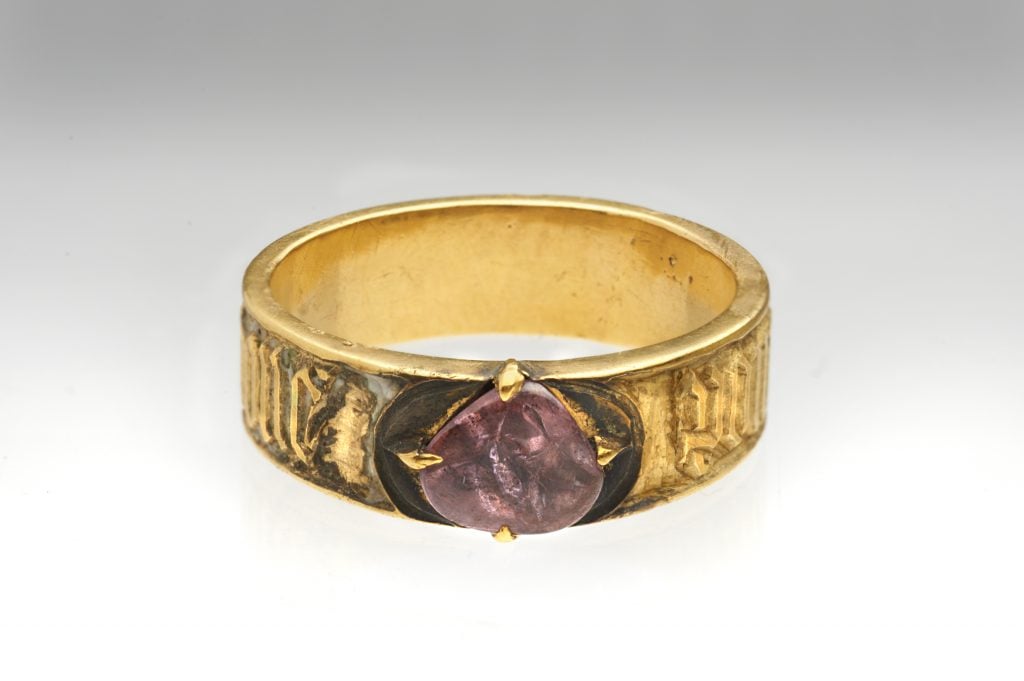
Gold finger ring (mid 15th century) with an engraved band with inscription, “For Love I am Given.” Photo: © London Museum.
The earliest artifact is an early Bronze Age flint arrowhead which dates back 3,000 years. Another weapon on display is a 10th-century iron dagger known as a scramasax, from which the name Saxons is derived. It’s a finely worked thing, inlaid with silver, and marked with the owner’s name, Osmund. Later still, is a 16th century whistle used by a naval officer to communicate over the roar of wind and wave (the pitch could be altered). It’s made from pewter and features a lion whose tail curves into a convenient loop.
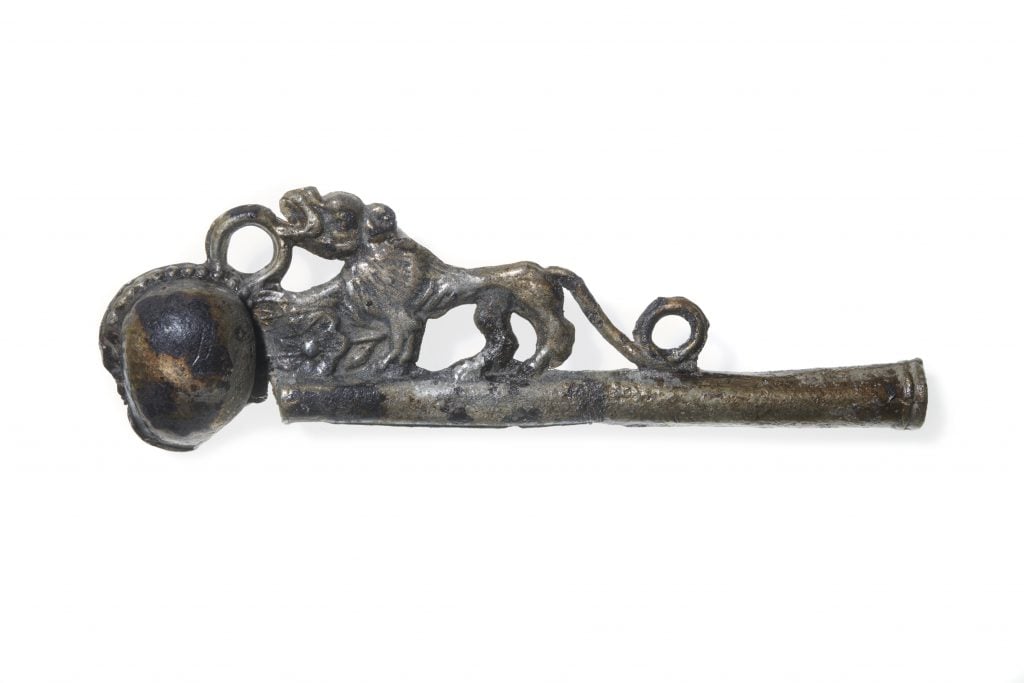
Bosun’s whistle (1550–1600). Photo: © London Museum.
Elsewhere, we encounter domestic discoveries. There’s a toy cauldron dating from the 15th or 16th century that is an exact copy of those placed over open fires to cook food. There’s a pair of late Medieval spectacles designed to bend snugly around the nose and served both short and long sightedness. There’s a set of early 18th-century false teeth made of carved ivory. They were bespoke and would have been remarkably expensive, the museum noted.
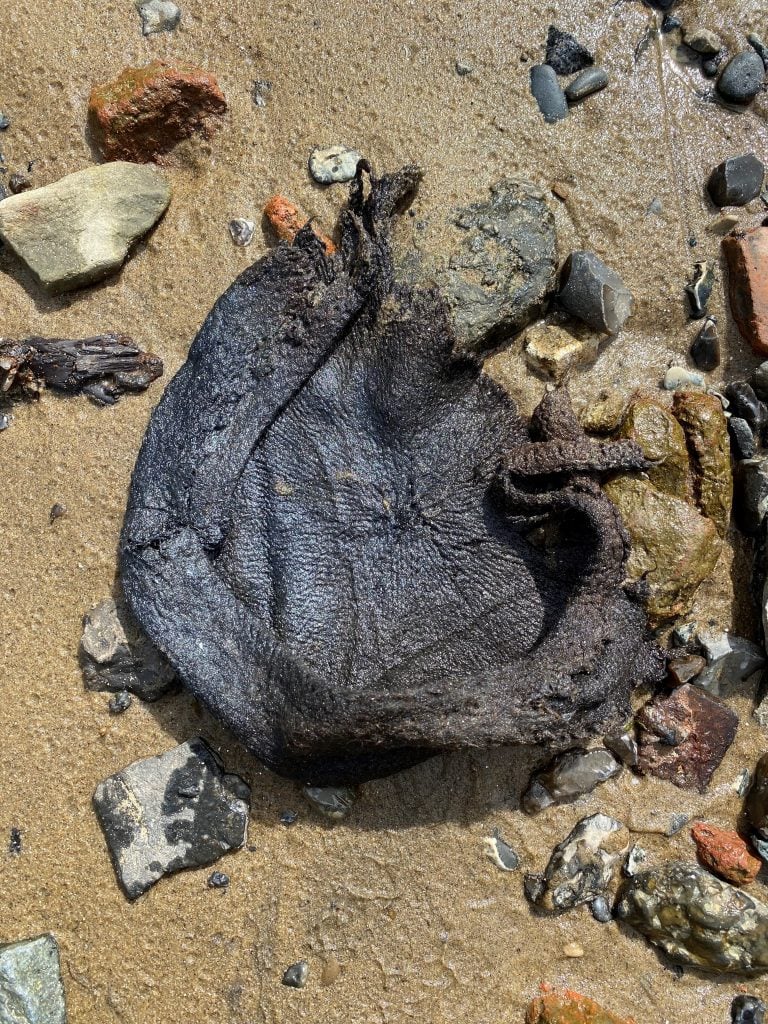
Tudor knitted woolen cap (ca. 1500–1600) found on the foreshore by mudlark Alessio Checconi. © Alessio Checconi.
Perhaps most remarkably, given its material and age, is a 500-year-old woolen Tudor cap. It’s an affordable imitation of velvet versions that were fashionable for upper-class women. Few such caps have survived.
“There are traces of everyday lives,” said Sumnall. “The food eaten, the clothes worn, their faith, skills and trade. These little insights all build up into the bigger picture of London.”
“Secrets of the Thames: Mudlarking London’s Lost Treasures” will be on view at the London Museum Docklands, 1 West India Quay, Hertsmere Road, London, April 4, 2025–March 1, 2026.





